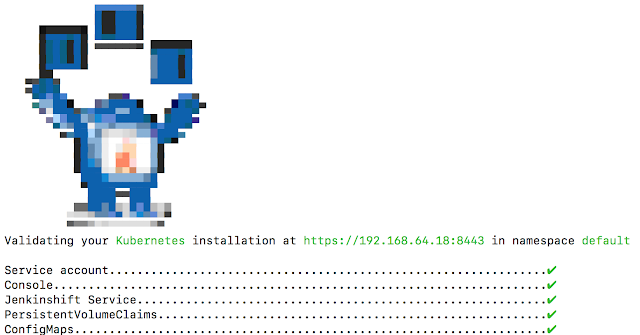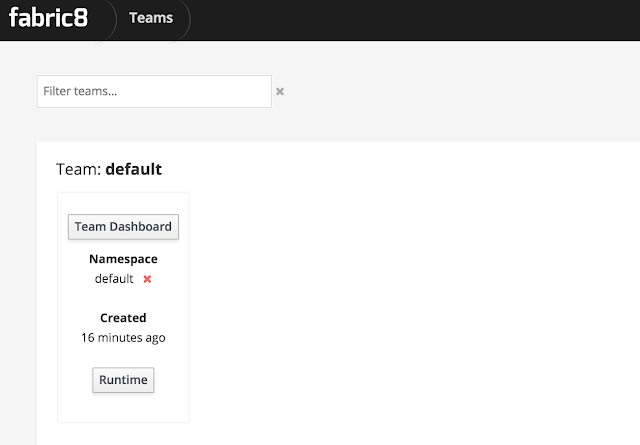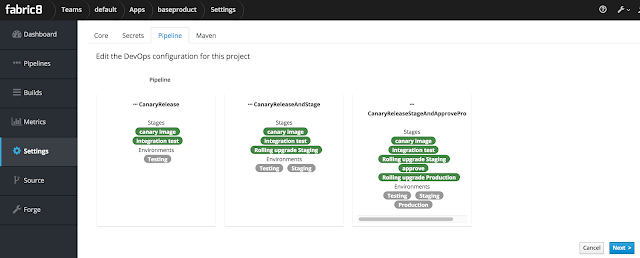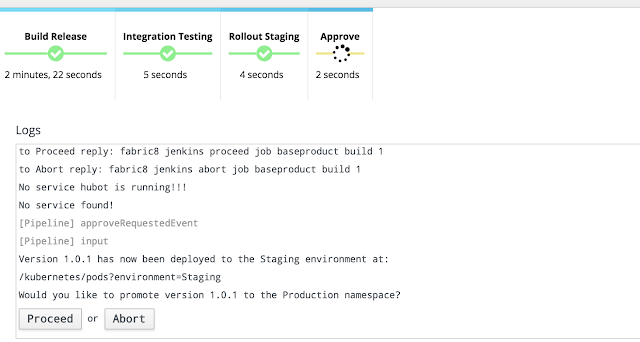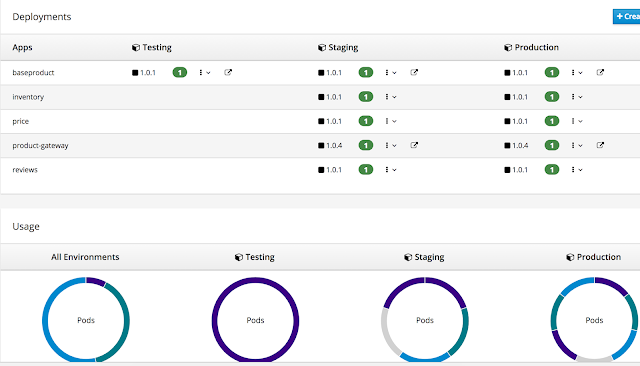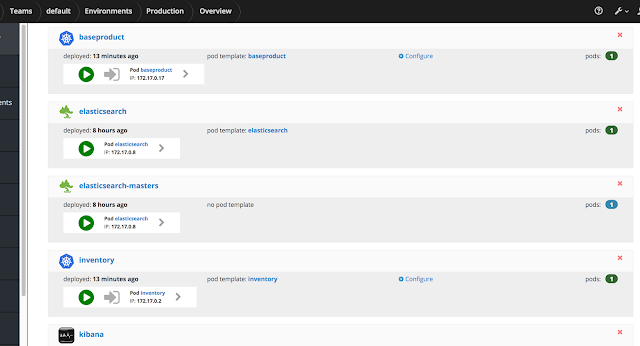API First Approach
The term API First design seems to be quite prevalent with Microservices and especially for those on the cloud. Swagger.io defines API first as: "An API-first approach means that for any given development project, your APIs are treated as “first-class citizens.” That everything about a project revolves around the idea that the end product will be consumed by mobile devices, and that APIs will be consumed by client applications.". API first approach involves giving more thought ahead of time toward the design of the API. It involves planning across stake holders and feedback on the API before the API is translated to code.
They seem to state some characteristics of API that are developed using an API First approach:
- That they are consistent. This makes sense. In an ecosystem of API's, one would like the API's to have a level of consistency
- That can be developed using an API definition language
- That they are re-usable
An API first approach seems to want to focus first on the API rather than building versions of the API for mobile and web etc.
Kevin Hoffmann in his BLOG, An API-first approach for cloud-native app development describes a cloud Microservice ecosystem where there are multiple services in play and that without discipline, represents a nightmarish scenario of integration failures. He goes on to state: "To avoid these integration failures, and to formally recognize your API as a first-class artifact of the development process, API first gives teams the ability to work against each other’s public contracts without interfering with internal development processes." Kevin also stresses that designing your API first enables one to have a discussion with stakeholders with some tangible material (the API), leading to the creation of user stories, mocked API and documentation that socialize the scope of the service.
Swagger defines the following as benefits of an API First Approach to creating services:
I think the beauty of the API first development is not as much about the technology but is about the methodology and principles advocated by the approach where the API is worked on ahead of developing the code and is bought into by the stakeholders before investment is done on the effort. The API in such as ecosystem is considered as a first class citizen of the business. The simplicity of the IDL along with the tooling made available makes the job of writing the IDL pretty easy. This coupled with the fact that the IDL itself is very readable helps make it easy for people to understand what the capabilities of the API will be. Code generation tools also allows the generation of the service/client stubs in a multitude of languages which makes polyglot programming easy.
They seem to state some characteristics of API that are developed using an API First approach:
- That they are consistent. This makes sense. In an ecosystem of API's, one would like the API's to have a level of consistency
- That can be developed using an API definition language
- That they are re-usable
An API first approach seems to want to focus first on the API rather than building versions of the API for mobile and web etc.
Kevin Hoffmann in his BLOG, An API-first approach for cloud-native app development describes a cloud Microservice ecosystem where there are multiple services in play and that without discipline, represents a nightmarish scenario of integration failures. He goes on to state: "To avoid these integration failures, and to formally recognize your API as a first-class artifact of the development process, API first gives teams the ability to work against each other’s public contracts without interfering with internal development processes." Kevin also stresses that designing your API first enables one to have a discussion with stakeholders with some tangible material (the API), leading to the creation of user stories, mocked API and documentation that socialize the scope of the service.
Swagger defines the following as benefits of an API First Approach to creating services:
- Parallel development among teams as they work with the interface or contract as they lend themselves to mocking and stubbing.
- Reduces cost of developing applications as API can code can be re-used across multiple applications. Focusing on API design and establishment allows for the problem to thought through well enough before the code is even invested in.
- Speed to Market due to the automation support around generating of code from the API specification in place
- Ensures a good developer experience as the API is consistent, well documented and well designed.
- Reduces the risk of failure for the business as API first approach ensures that the APIs are reliable, consistent and easy for developers to use
I think the beauty of the API first development is not as much about the technology but is about the methodology and principles advocated by the approach where the API is worked on ahead of developing the code and is bought into by the stakeholders before investment is done on the effort. The API in such as ecosystem is considered as a first class citizen of the business. The simplicity of the IDL along with the tooling made available makes the job of writing the IDL pretty easy. This coupled with the fact that the IDL itself is very readable helps make it easy for people to understand what the capabilities of the API will be. Code generation tools also allows the generation of the service/client stubs in a multitude of languages which makes polyglot programming easy.
Open API and Swagger
The Open API Specification is a community driven one that defines a programming language agnostic IDL for REST API. The IDL is defined in a way that is intuitive for humans to read and author without requiring additional code. Open API documents are generated using YAML or JSON. The Open API specification evolved from Swagger 2.0 specification with input from the community.
The specification allows authoring of API including end points, authentication mechanisms, operation parameters, request/response types and other licensing information.
Swagger is a bunch of a tools that are used for the implementation of the specification like Editor, Code Generator etc.
The full source code for this example can be found at: open-api-example
For the Open API example, I chose to use my favorite simplistic notes service. I then placed the following requirements on it:
For the first requirement, the notes api.yaml file that describes the API is being bundled in a notes-api maven jar. This jar only has the API file, it does not bundle in any classes. The YAML file is set up to use Basic Authentication of all its resources. Part of the API specification is shown below:
To generate the server stubs, I used the swagger-codegen-maven-plugin configured as shown:
The plugin uses the notes-api as a JAR dependency to build the stub. Think of the notes-api JAR as being an artifact that the service creators have authored and published as a JAR for clients to use in some maven repository. Typically these artifacts would be authored and published in some API registry but for the scope of this example, the simpler jar method works. Of importance on the generated code is the NotesApi that defines the different operations and documents it with content from the swagger file and the NotesApiDelegate that defines the API stubs like shown below:
The generated stub has a bunch of default signatures that need to be implemented. The code generated does not have any 'security' level annotations or the stub code for security. It leaves that to the implementor. Shown below is the NotesApiDelegateImpl that a developer would author which implements the NotesApiDelegate and uses to a Spring Data JPA NotesRepository for the CRUD operations:
For the Basic Authentication, the example uses Spring Security which is configured as shown below with support for only one demo user having user name 'user' and password 'password':
There service is configured to serve the api.yaml file via a rest endpoint as well.
A maven module exists called notes-client that uses the same plugin to generate the client side artifacts including the model artifacts. The service maintainers would typically not distribute such a client (See my blog around:Shared Client Libraries) but would expect the client to be generated in similar manner using the notes-api maven dependency in the consuming application directly.
The generated client stubs utilize RestTemplate and provide a neat client abstraction to communicate with the service. The client stubs pleasantly include basic authentication support built in that challenge as needed to invoke the API. The sample integration test demonstrates the use of the generated Notes client stubs.
When the server module is built, a docker image is created. For this reason, you need to have docker installed on your computer prior to playing with this.
The integration test module launches the service container using the TestContainers framework directly from a JUnit test and subsequently uses the notes-client to invoke the API methods.
The full source code for this project can be found at open-api-example.
I really liked the Open API specification as I felt that defining the API is pretty intuitive. If you use the Swagger Editor UI, then authoring the API definition is pretty straightforward where the tool assists in making corrections. Using something like Swagger Hub to collaboratively author the API where different stake holders are participating in the creation/evolution of the API is valuable. There are also some really good eclipse plugins that help with authoring of the api as well if you don't want to use Swagger UI.
The swagger-code-generator was pretty good to generate the Spring Boot service and the client that uses RestTemplate. It however did nothing for spring-security and the Basic Authentication pieces. Maybe a future version would allow a tag for security-framework to generate security classes. One hard point I had was that the generated service code did not support alternate execution paths well. For example, there was no easy way to respond with a different entity type in the generated code for an error condition like a 404. This could lead to drift between what is documented and what is actually returned. I used a hack where I defined a Spring Exception handler to interrogate the annotation on the NotesApi and pull the response message from it as shown below:
Another example that I found hard to do on the client is to respond with a Location header to a POST request with the location of a created note. The generated client did not provide any way to expose that to the consumer of the generated code.
Overall I really liked the Open API specification and the collaborative definition of an API. I also liked the idea that teams spend time thinking of what their API should be before they get down to coding. Service consumers should use the API to generate their own consumer clients.
The specification allows authoring of API including end points, authentication mechanisms, operation parameters, request/response types and other licensing information.
Swagger is a bunch of a tools that are used for the implementation of the specification like Editor, Code Generator etc.
Open API Example
The full source code for this example can be found at: open-api-example
For the Open API example, I chose to use my favorite simplistic notes service. I then placed the following requirements on it:
- Needed to generate the API definition first and have a simple way to make it available for service and service consumers to use
- Have the Open API definition support basic authentication
- Use the API definition to generate the service stubs
- Use the API definitions to generate client stubs
- Use the client stubs to invoke the service in a simple integration test
For the first requirement, the notes api.yaml file that describes the API is being bundled in a notes-api maven jar. This jar only has the API file, it does not bundle in any classes. The YAML file is set up to use Basic Authentication of all its resources. Part of the API specification is shown below:
openapi: "3.0.0"
info:
version: '1.0'
title: Notes Service
description: Demo project of open api 3 using API first development
termsOfService: http://localhost:8080/terms-of-service
contact:
name: Sanjay Acharya
email: foo@bar.com
security:
- BasicAuth: []
paths:
/notes:
get:
summary: Get all notes
operationId: getNotes
tags:
- notes
parameters:
- name: page
in: query
description: Page Number
required: false
schema:
type: integer
format: int32
- name: page-size
in: query
description: Number of items to return at one time
required: false
schema:
type: integer
format: int32
responses:
'200':
description: A paged array of notes
content:
application/json:
schema:
$ref: "#/components/schemas/NotesPage"
'404':
$ref: "#/components/responses/NotFound"
default:
$ref: "#/components/responses/UnexpectedError"
....
....
To generate the server stubs, I used the swagger-codegen-maven-plugin configured as shown:
<plugin>
<groupId>io.swagger.codegen.v3</groupId>
<artifactId>swagger-codegen-maven-plugin</artifactId>
<version>3.0.2</version>
<dependencies>
<dependency>
<groupId>com.welflex.example</groupId> // Dependency to notes-api in classpath during plugin execution
<artifactId>notes-api</artifactId>
<version>1.0-SNAPSHOT</version>
</dependency>
</dependencies>
<executions>
<execution>
<id>server</id>
<goals>
<goal>generate</goal>
</goals>
<configuration>
<inputSpec>/api.yaml</inputSpec>
<language>spring</language>
<library>spring-boot</library> // Generate SpringBoot based stubs
<output>${project.build.directory}/generated-sources</output>
<invokerPackage>com.welflex.notes</invokerPackage>
<apiPackage>com.welflex.notes.api.generated</apiPackage>
....
</configuration>
</execution>
</executions>
</plugin>
The plugin uses the notes-api as a JAR dependency to build the stub. Think of the notes-api JAR as being an artifact that the service creators have authored and published as a JAR for clients to use in some maven repository. Typically these artifacts would be authored and published in some API registry but for the scope of this example, the simpler jar method works. Of importance on the generated code is the NotesApi that defines the different operations and documents it with content from the swagger file and the NotesApiDelegate that defines the API stubs like shown below:
@Api(value = "notes", description = "the notes API")
public interface NotesApi {
NotesApiDelegate getDelegate();
@ApiOperation(value = "Creates a new note", nickname = "createNote", notes = "", response = Note.class, authorizations = {
@Authorization(value = "BasicAuth")
}, tags={ "notes", })
@ApiResponses(value = {
@ApiResponse(code = 201, message = "A simple string response", response = Note.class),
@ApiResponse(code = 200, message = "Unexpected Error", response = Error.class) })
@RequestMapping(value = "/notes",
produces = { "application/json" },
consumes = { "application/json" },
method = RequestMethod.POST)
default ResponseEntity<Note> createNote(@ApiParam(value = "The note contents" ,required=true ) @Valid @RequestBody Note body) {
return getDelegate().createNote(body);
}
@ApiOperation(value = "Gets a Note", nickname = "getNote", notes = "", response = Note.class, authorizations = {
@Authorization(value = "BasicAuth")
}, tags={ "notes", })
@ApiResponses(value = {
@ApiResponse(code = 200, message = "The note requested", response = Note.class),
@ApiResponse(code = 404, message = "The specified resource was not found", response = Error.class),
@ApiResponse(code = 200, message = "Unexpected Error", response = Error.class) })
@RequestMapping(value = "/notes/{id}",
produces = { "application/json" },
method = RequestMethod.GET)
default ResponseEntity<Note> getNote(@ApiParam(value = "The id of the note to retrieve",required=true) @PathVariable("id") Integer id) {
return getDelegate().getNote(id);
}
....
}
public interface NotesApiDelegate {
....
/**
* @see NotesApi#createNote
*/
default ResponseEntity<Note> createNote( Note body) {
if(getObjectMapper().isPresent() && getAcceptHeader().isPresent()) {
} else {
log.warn("ObjectMapper or HttpServletRequest not configured in default NotesApi interface so no example is generated");
}
return new ResponseEntity<>(HttpStatus.NOT_IMPLEMENTED);
}
/**
* @see NotesApi#getNote
*/
default ResponseEntity<Note> getNote( Integer id) {
if(getObjectMapper().isPresent() && getAcceptHeader().isPresent()) {
} else {
log.warn("ObjectMapper or HttpServletRequest not configured in default NotesApi interface so no example is generated");
}
return new ResponseEntity<>(HttpStatus.NOT_IMPLEMENTED);
}
..
}
The generated stub has a bunch of default signatures that need to be implemented. The code generated does not have any 'security' level annotations or the stub code for security. It leaves that to the implementor. Shown below is the NotesApiDelegateImpl that a developer would author which implements the NotesApiDelegate and uses to a Spring Data JPA NotesRepository for the CRUD operations:
public class NotesApiDelegateImpl implements NotesApiDelegate {
private final NotesRepository notesRepository; // Yes, Yes, we could delegate to a service and then to a repository, it is an example :-)
@Autowired
public NotesApiDelegateImpl(NotesRepository notesRepository) {
this.notesRepository = notesRepository;
}
/**
* @see NotesApi#getNote
*/
public ResponseEntity<Note> getNote( Integer id) {
Optional<NoteModel> noteModel = notesRepository.findById(id);
if (noteModel.isPresent()) {
return ResponseEntity.ok(toNote(noteModel.get()));
}
throw new NoteNotFoundException(id);
}
public ResponseEntity<NotesPage> getNotes( Integer page,
Integer pageSize) {
int pageRequest = page == null? 0 : page;
int limitRequested = pageSize == null ? 100 : pageSize;
Page<NoteModel> dataPage = notesRepository.findAll(PageRequest.of(pageRequest, limitRequested));
PageMetadata pageMetadata = new PageMetadata().pageNumber(pageRequest).pageSize(limitRequested).resultCount(dataPage.getNumberOfElements())
.totalResults(dataPage.getTotalElements());
Notes notes = new Notes();
notes.addAll(dataPage.stream().map(t -> toNote(t)).collect(Collectors.toList()));
NotesPage notesPage = new NotesPage().items(notes).metadata(pageMetadata);
return ResponseEntity.<NotesPage>ok(notesPage);
}
...
}
For the Basic Authentication, the example uses Spring Security which is configured as shown below with support for only one demo user having user name 'user' and password 'password':
@Configuration
@EnableWebSecurity
public class SecurityConfiguration extends WebSecurityConfigurerAdapter {
@Override
protected void configure(HttpSecurity http) throws Exception {
http.csrf().disable().authorizeRequests().antMatchers("/index.html", "/api.yaml", "/api-docs")
.permitAll().anyRequest().authenticated().and().httpBasic();
super.configure(http);
}
@Autowired
public void configureGlobal(AuthenticationManagerBuilder auth) throws Exception {
PasswordEncoder encoder = PasswordEncoderFactories.createDelegatingPasswordEncoder();
auth.inMemoryAuthentication().withUser("user").password(encoder.encode("password"))
.roles("USER");
}
}
There service is configured to serve the api.yaml file via a rest endpoint as well.
A maven module exists called notes-client that uses the same plugin to generate the client side artifacts including the model artifacts. The service maintainers would typically not distribute such a client (See my blog around:Shared Client Libraries) but would expect the client to be generated in similar manner using the notes-api maven dependency in the consuming application directly.
<plugin>
<groupId>io.swagger.codegen.v3</groupId>
<artifactId>swagger-codegen-maven-plugin</artifactId>
<version>3.0.2</version>
<dependencies>
<dependency> // Dependency to notes-api in classpath during plugin execution
<groupId>com.welflex.example</groupId>
<artifactId>notes-api</artifactId>
<version>${project.version}</version>
</dependency>
</dependencies>
<executions>
<execution>
<id>client</id>
<goals>
<goal>generate</goal>
</goals>
<configuration>
<inputSpec>/api.yaml</inputSpec> // API from classpath
<language>java</language>
<library>resttemplate</library> // Generate for RestTemplate
<output>${project.build.directory}/generated-sources</output>
<ignoreFileOverride>${project.basedir}/src/main/resources/.openapi-codegen-ingore</ignoreFileOverride>
<apiPackage>com.welflex.notes.api.generated</apiPackage>
</configuration>
</execution>
</executions>
</plugin>
The generated client stubs utilize RestTemplate and provide a neat client abstraction to communicate with the service. The client stubs pleasantly include basic authentication support built in that challenge as needed to invoke the API. The sample integration test demonstrates the use of the generated Notes client stubs.
When the server module is built, a docker image is created. For this reason, you need to have docker installed on your computer prior to playing with this.
The integration test module launches the service container using the TestContainers framework directly from a JUnit test and subsequently uses the notes-client to invoke the API methods.
The full source code for this project can be found at open-api-example.
Parting Thoughts
I really liked the Open API specification as I felt that defining the API is pretty intuitive. If you use the Swagger Editor UI, then authoring the API definition is pretty straightforward where the tool assists in making corrections. Using something like Swagger Hub to collaboratively author the API where different stake holders are participating in the creation/evolution of the API is valuable. There are also some really good eclipse plugins that help with authoring of the api as well if you don't want to use Swagger UI.
The swagger-code-generator was pretty good to generate the Spring Boot service and the client that uses RestTemplate. It however did nothing for spring-security and the Basic Authentication pieces. Maybe a future version would allow a tag for security-framework to generate security classes. One hard point I had was that the generated service code did not support alternate execution paths well. For example, there was no easy way to respond with a different entity type in the generated code for an error condition like a 404. This could lead to drift between what is documented and what is actually returned. I used a hack where I defined a Spring Exception handler to interrogate the annotation on the NotesApi and pull the response message from it as shown below:
@ControllerAdvice
public class ExceptionMapper extends ResponseEntityExceptionHandler {
@ExceptionHandler(value = {NoteNotFoundException.class})
public ResponseEntity<?> handleException(Exception e, HandlerMethod handlerMethod) {
if (e instanceof NoteNotFoundException) {
return handleNoteNotFoundException(NoteNotFoundException.class.cast(e), handlerMethod);
}
else {
Error error = new Error().message("Unexpected Error:" + e.getMessage());
return new ResponseEntity<Error>(error, HttpStatus.INTERNAL_SERVER_ERROR);
}
}
private ResponseEntity<?> handleNoteNotFoundException(NoteNotFoundException e,
HandlerMethod handlerMethod) {
ApiResponse apiResponse = getApiResponseForErrorCode(404, handlerMethod);
Error error = new Error().message(apiResponse != null ? apiResponse.message() : "Note not found:" + e.getNoteId()); // Use the message as defined in the annotation
return new ResponseEntity<Error>(error, HttpStatus.NOT_FOUND);
}
private ApiResponse getApiResponseForErrorCode(int errorCode, HandlerMethod method) {
...
return method.getMethodAnnotation(ApiResponse.class);
}
}
Another example that I found hard to do on the client is to respond with a Location header to a POST request with the location of a created note. The generated client did not provide any way to expose that to the consumer of the generated code.
Overall I really liked the Open API specification and the collaborative definition of an API. I also liked the idea that teams spend time thinking of what their API should be before they get down to coding. Service consumers should use the API to generate their own consumer clients.

















